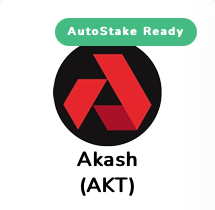Learn More About Cosmos
What is Cosmos (ATOM), and what is it used for?
ATOM is the native token used to secure and power the Cosmos Proof-of-Stake ecosystem. ATOM is designed to fuel communication, scaling, and interoperations between blockchains. The blockchains built on Cosmos are connected through the Inter-Blockchain Communication (IBC) protocol. ATOM holders contribute to the network’s security via staking, and earn a reward for their contribution.
What are Cosmos staking rewards?
Staking rewards in the form of native blockchain tokens (ATOM) are distributed to validators for locking up their cryptocurrencies to a blockchain network to support validator node’s participation in the consensus mechanism and securing the network for a period of time. Refer to the data above for the latest Cosmos staking reward figures.
What are the costs of staking Cosmos?
StakeSeeker charges a small percentage-based fee (stated above) allocated towards the administerial 24/7 maintenance and monitoring of our staking infrastructure required to operate our validators effectively and securely. The rewards distributed to our community will be a net of the validator fee charged.
Is staking Cosmos secure?
When ATOM is staked, it’s actually being delegated to a validator. In our case, StakeSeeker facilitates the role of the validator. Similar to staking tokens on any other protocol, staking ATOM comes with certain risks. If any downtime is experienced, or if a validator misses another part of the necessary requirements, then a percentage of the staked ATOM can be lost as a penalty (known as “slashing”). StakeSeeker monitors its nodes 24/7 and has an excellent track record that minimizes these risks.
What are the current use cases for Cosmos?
The Cosmos IBC is connected to over 50 different blockchains. Some use cases include smart contract relationships, single-use blockchains, and multi-team applications (Bankless).
How is Cosmos different from Ethereum?
Cosmos and Ethereum are both secured through a Proof-of-Stake consensus mechanism. However, they are more of a counterbalance to one another as opposed to competitors. The upcoming Gravity Bridge will allow ETH and ERC20 tokens to be brought over to Cosmos and for Cosmos IBC tokens to be brought into Ethereum.
How long does it take to unstake my ATOM?
Unstaking (also called unbonding or undelegating) can be initiated at any time. However, it takes approximately 21 days for your ATOM to unstake from the network and become transferable. During this time, you will not earn rewards. When the process is complete, you regain the ability to transfer/trade your ATOM tokens.
Is there a minimum amount of ATOM to stake?
You can stake as little as 1 ATOM, but remember to keep some ATOM token unstaked in your wallet to pay for any potential future transaction fees.
What are the risks of staking Cosmos?
Like many blockchain protocols, the consensus mechanism used by Cosmos includes a slashing mechanism whereby any validator that misses too many blocks or double signs a block is penalized by the network, slashing the staked amount on that validator. StakeSeeker is run by Nasdaq listed BTCS Inc. which has its own tokens staked on the same validator nodes, so we are highly incentivized to minimize these risks and maximize our staking reward. However, delegators should be cognizant of these risks.
How do I get started staking Cosmos?
To begin staking Cosmos, click the “Start Staking” button at the top right, create an account with StakeSeeker and gain access to the platform’s crypto portfolio insights. Then, you can begin staking with our validator nodes by delegating your tokens. Within the platform, there are instructions and tutorials on how to link your crypto exchange accounts and digital wallets and how to navigate the platform’s tools. You can view our supported blockchain networks for staking on our homepage.




